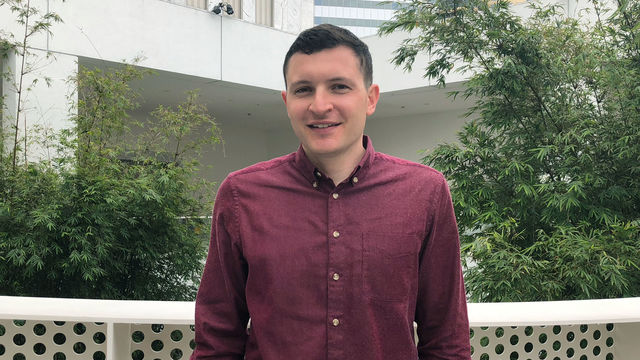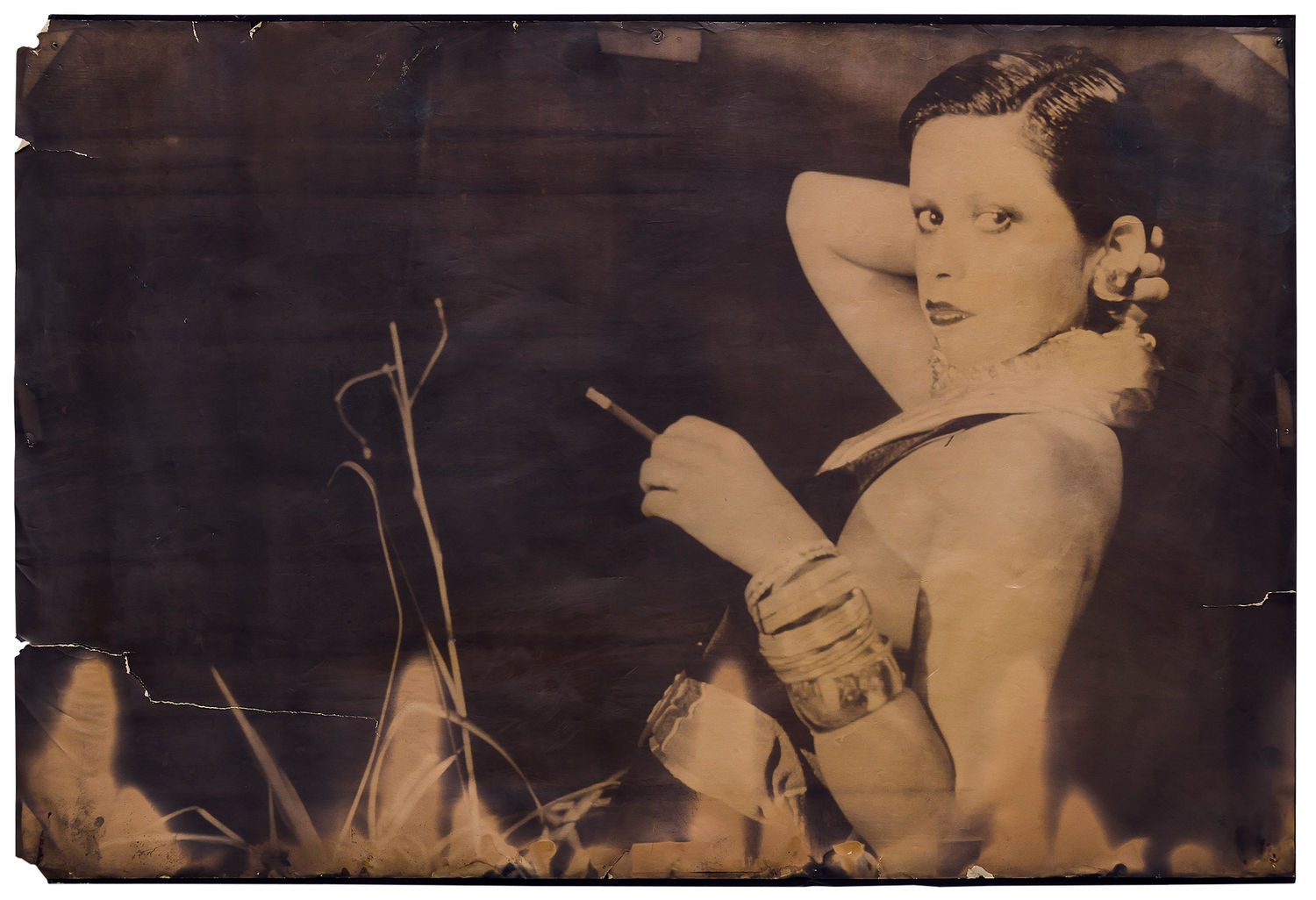
Staff Spotlight: Philip Leers, Project Manager for Digital Initiatives
This post is part of a new series of interviews with staff members from our curatorial department.
Lisa Aubry: How did you end up at the Hammer? Did you know that you wanted work in a museum?
Philip Leers: I did my undergrad at the University of Chicago and studied film history and film theory. I got a masters in cinema studies, film history, and film theory at the University of Toronto. At that point I got interested in the archival side of things, so I got a second masters at UCLA in moving image archive studies. So I was not exactly working in the museum sphere the whole time, but I have always been interested.
My mom was a museum educator when I was a kid. I grew up in Pittsburgh, and I can remember when the Warhol Museum opened for the first time and all the Carnegie Internationals, which were big moments for me. For my first internship after my freshman year of college, I worked at the Warhol Museum, in their archives. It was something I always had in the back of my mind as I was working in the humanities, and I knew I wanted to work at a place where I was surrounded by interesting people and culture. When I was in grad school at UCLA I worked with the Getty Research Institute, and after graduation spent two years working at the Carnegie Museum of Art’s film and video collection archives. Around that time, I saw the listing for my current job at the Hammer, which seemed to me like an opportunity to continue what I was doing but to get into the digital space a little bit more.
What does your job entail? What is your favorite part of this job?
Project Manager for Digital Initiatives is a position that was created when the Hammer received a grant from The Andrew W. Mellon Foundation. The goal of the grant is, broadly speaking, to create web resources for our website based on the museum’s exhibition history and collections. These resources, which we call digital archives, are scholarly websites that provide a range of materials highlighting important aspects of the Hammer’s exhibition and collection history. Building these archives involves a lot of preparation: identifying exhibitions and areas of our collection to highlight; doing research on the work, including rights and reproduction research; getting work photographed; making sure that the cataloguing information on the works is correct and consistent; and having new web templates built for our website to hold this information.
We have launched four digital archives, which are web-based hubs for research. Two of our first archives are about exhibitions. We have one featuring Now Dig This! Art and Black Los Angeles, 1960–1980, an exhibition from 2011. The second is Take It or Leave It, which was on view in 2014. We published images of all the artworks in the exhibitions, as well as essays, artist biographies, timelines, and bibliographies. After creating digital archives for these exhibitions, we created a couple of collection-focused archives—one about the work of the artist Corita Kent who was an activist, printmaker, and nun in California; and one about Fred Grunwald, whose collection formed the Grunwald Center for the Graphic Arts, part of the Hammer’s collections. Grunwald was a German Jew whose print collection was seized by the Gestapo in Germany. He fled to Los Angeles in 1939 and started collecting prints all over again. We did a lot of research into both American and German archives to piece together the circumstances of the family’s journey and what happened to the prints that were confiscated. We didn't ultimately find the seized collection, but we found interesting archival material and were able to and include it in the online digital archive.
My favorite thing about my job is that it’s different every day. My position is in the curatorial department, but I get to work with people in communications, IT, and the registrar. I get to see what everyone else is working on and how we can make those things work together. One of the great things about working in museums is that everyone is smart, interested, and energetic. So, it is a great atmosphere to work in.
What is your favorite project that you have worked on at the Hammer?
The Now Dig This! digital archive was the first project I worked on. The show had been long over by the time I arrived at the Hammer in 2014, as it was on view in 2011 and 2012. Unlike most people in the curatorial department, I don't start working with the exhibitions until they are finished. Now Dig This! is great because it was such an important show that I wasn't able to see, so I got to feel like I had been there through dealing with all the material—not just images of the artworks, but also images of the artists from the 1960s and 1970s. All of these great archival materials brought the online presentation to life. Now I am working on a digital archive for the Radical Women exhibition, which just closed, and is traveling to the East Coast and South America. There are dozens of artists and hundreds of artworks, so I’m just now starting to dig in.

What is your favorite artwork from the Hammer collection?
I don’t have any one favorite, but I have been looking at one of our recent acquisitions, Patssi Valdez’s Portrait of Patssi (1975), which was on view in Radical Women. The way the subject is posed—sitting back with one hand behind her head and the other dangling a cigarette—and how she looks directly into the camera is just amazing, confronting, and inviting at the same time. There’s also this interesting push and pull, because it almost looks like it’s from the 1920s or 1930s by the way that she's dressed and styled—I'm reminded of Marlene Dietrich, from the androgynous hairstyle to the cigarette in her hand—and because the image is printed in sepia tone on poster paper that has degraded. But the photo is actually from 1975, and Valdez is not a Hollywood starlet, but a Chicana artist from East L.A. I’m really compelled by the way that this simple portrait embraces so many contradictions—between old and new, masculine and feminine, and above all between the image of Hollywood glamour and the lived realities of Angelenos—and how that tension can be projected onto her face and her pose. It’s just perfect.
Archiving involves pulling from and reassembling content that already exists. Can archives be used to form new connections and ideas?
I see my role and the museum’s role as gathering these materials and making sure that they are safe and accessible. We are trying to preserve the research process and the raw materials that go into making an exhibition. The idea is to give people a sense of what the exhibition looked like, the kind of conversations it engendered, and to give it an afterlife. If you are a researcher who is interested in a specific exhibition, it can be really hard to find that kind of information and that level of detail. What we want to do is provide the information as a jumping off point for researchers. So we try to think, "If I was a researcher and I was interested in this, what would I want or need?" Professors have started including the digital archives in their curricula, and that's the kind of engagement that we really want. People are using it, students are looking at it, and educators are using it to teach. That's such a great outcome for us.
Eventually we would love for references to the digital archives to start to show up in academic publications, but we don't have much say over that. What’s most gratifying for us is the idea that this material is now becoming the subject of new ideas, new research, and starting new conversations. That’s what we were hoping for. We want the Hammer to be recognized as a place that people come to for in-depth scholarly content.
What is your advice for students who are aspiring to launch a career in the art world?
I would encourage people to keep questioning and challenging institutions—not just museums, but the field, the ideas, and the concepts that have been in place now for hundreds of years. I notice topics that are starting to rumble—issues of accessibility, or of representation in our collections, in our staffs, and on our boards, for instance—that maybe in the next 5 or 10 years are going to come to the forefront. The process of identifying things that are on the margins and pulling them towards the center is a constant churn in this industry. Those critical thinking skills are crucial. There are all kinds of blind spots and gaps in our knowledge and understanding. Newcomers to the field have a less biased eye, so you can come in with a different view of the industry, and that helps to bring about good change.




